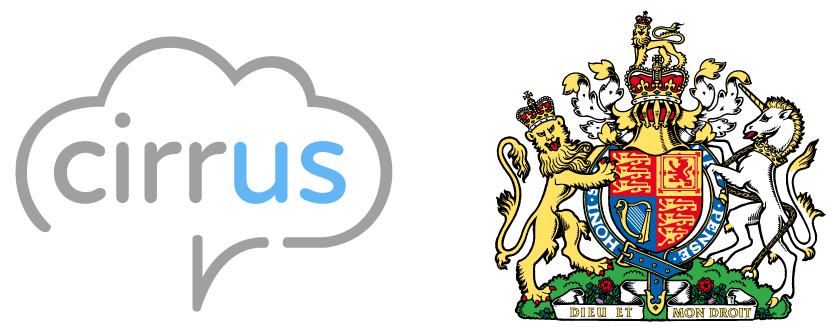The post-pandemic era has been a definitive turning point for businesses, underlining the vital role of technology in facilitating remote work without sacrificing service quality. This shift has been particularly evident in contact centres, which are now seamlessly integrating remote operations with cutting-edge advancements in AI and machine learning. A report by Gartner projects a 60% increase in remote contact centres from 2022 to 2024. This surge has increased the demand for voice assistants, with an estimated 8.4 billion required to meet growing customer service demands.
Remote Contact Centres in a Nutshell
A remote contact centre powers agents to handle customer interactions from home. Agents work outside a central office in a virtual model with the perks of location flexibility. By leveraging remote agents, contact centres efficiently manage customer requests in real-time, ensuring seamless service.
What Are the Benefits?
Agents operating from the comfort of their homes often find themselves willing to accommodate slightly extended workloads, a small trade-off for the convenience of a home-based setup. Yet, this is just the tip of the iceberg. The remote contact centre model offers a great advantage to both customers and agencies, including a number of benefits that extend far beyond mere convenience. These advantages include:
More Flexibility
Remote call centres significantly lower their overhead costs with a work-from-home (WFH) setup, enabling the redistribution of their budget towards expanding their talent pool and offering round-the-clock services. This shift not only benefits contact centres financially but also enhances customer experience. Customers are not constrained by traditional business hours and can address their concerns and seek expert guidance at their convenience. This flexibility in operations enhances customer satisfaction and directly translates into increased profits.
Higher Engagement
Modern remote contact centres offer customer engagement through omni-channel solutions. An omni-channel set-up enables customers to connect with agents through various channels such as phone calls, video calls, and even WhatsApp Business. With multiple options for communication, customers feel in power to meet their needs, resulting in high customer engagement and improved customer satisfaction.
Increased Capacity
With advanced systems like skill-based automatic routing, agents can efficiently handle many customer requests. Skill-based routing ensures that each customer is connected to the most appropriate agent for their specific needs, resulting in quicker and more accurate issue resolution.
Happy Customers
Customers often feel a stronger connection with local agents; a remote setup equipped with advanced technologies enables this. By automatically connecting customers with agents in close geographical proximity, these remote systems enhance the customer experience by providing a sense of familiarity and understanding. This pairing caters to regional nuances and significantly boosts customer satisfaction, as clients feel more understood and valued.
How Remote Contact Centres are Evolving Today
Today, while the need for human agents is still essential, AI-powered chatbots and virtual assistants handle routine customer queries, reducing waiting times and improving response accuracy.
Growing Demand for AI and Machine Learning Capabilities
AI and machine learning have changed the game in remote contact centres. There’s a real growth in demand for these technologies. Why? With AI, many repetitive tasks get automated so that agents can focus on the trickier issues that need a personal touch. And the benefits?
- Reduced wait hours
- Improved response accuracy
- Boosted agent efficiency
Imagine AI handling simple queries like checking order status — it’s quick, and no human is needed. This reduces the time spent per call and lets the agents dive into more complex customer problems. Moreover, machine learning continually self-improves. It digs through heaps of data (like past customer chats), spots patterns, and even makes predictions. This leads to a kind of customer service that’s not just reactive but proactive and tailored to each customer. End result? Happier customers who stick around.
Enhancing the Customer Experience and Agent Productivity with Real-Time Data Analytics
Contact centres are using real-time data analytics to seriously analyse their customer experience and prepare agents to become way more productive.
Role of Real-time Data Analytics
- Finds critical conversations
- Identifies emotional triggers and skill gaps
- Delivers targeted coaching to agents
- Enhances staffing decisions
Here is a quick example to help you understand how analytics help.
Imagine a newbie agent dealing with a demanding customer. If a customer sounds unhappy during a call, the system quickly catches on and suggests to the agent, “Hey, maybe offer them this solution, or let’s get a supervisor to take a look.” This quick response can fix issues fast and stop customers from walking away.
And it’s not just about handling calls better. Analytics also sorts out which customer talks to which agent based on how urgent or complex the issue is. It’s like having a smart assistant who says, “This call? This goes to the agent who’s a whiz at solving these kinds of problems.” So, agents get calls they’re really good at handling, making them more efficient and, honestly, happier at work because they’re solving problems left and right.
Using Multi-Channel Platforms to Maximise Reach and Engagement with Customers
It’s rare to see a customer journey limited to a single device and session.
Take millennials, for instance: 63% of them favour getting their primary customer service questions answered through live chat widgets rather than the usual channels. Meanwhile, 28% of Gen Z are increasingly turning to in-app messaging. This is in contrast to just 12% of those aged 55 and over who are adopting this approach.
Consider a user who starts with a Google search, visits a website, sees a tailored Facebook ad, engages in live chat, receives an email, and finally buys. This interconnected cross-device journey, supported by a well-structured omni-channel strategy, gives customers the answers and support they need across channels without repetition.
Contact centres are increasingly adopting omni-channel strategies to address four critical business objectives:
- Agile channel activation
- Improved customer experience
- Quick and relevant responses
- Personalisation by automation
All these benefits lead straight towards customer retention.
Just a 5% increase in customer retention can hike a company’s revenue by a staggering 45%-95%. This uplift is mainly because repeat customers tend to spend 35% more per purchase compared to new customers. Plus, over their lifetime, they can spend up to ten times more than those who make only a single purchase.
That’s why a well-structured omni-channel strategy is what modern contact centres need to build stronger engagement, increase sales, and boost their ROI. And today, this can all be done remotely.
The Future of Remote Contact Centres
The future of remote contact centres is developing with significant technological advancements and shifts in operational strategies. Here’s a look into what lies ahead:
Cloud Software Domination: A major trend is the shift towards cloud-based operations. Currently, 75% of all contact centres are cloud-operated, with 44% fully cloud-based and 31% adopting a hybrid model. This is revolutionising how contact centres function, offering more flexibility and scalability.
AI-Driven Call Scripting: Call scripting is being transformed by software innovations. This evolution is making processes more efficient, with scripts now being built using a system controls library, enabling agents to access all necessary information through a single interface. This change is contributing to a reduction in call times by up to 40%, increasing customer satisfaction, and enhancing the capacity of agents to handle more calls daily.
Next Best Action (NBA) Approach: NBA, leveraging AI and machine learning, is guiding contact centre agents on the most effective actions to take during customer interactions. This approach is poised to significantly improve contact centre efficiency and customer experience by delivering personalised customer interactions and improving First Call Resolution (FCR) rates.
Tips For Remote Contact Centre Management
Implementing a remote contact centre function involves many considerations. Consider these five strategies to achieve the full potential of your virtual team:
1. Empower Your Remote Agents for Optimal Performance
To develop the success of your remote agents, it’s vital to equip them with essential tools and resources. Provide them with functional equipment like headsets and multiple monitors, and guarantee a stable broadband connection to prevent service interruptions. Implement robust security protocols and assist them in creating a specialised workspace to sustain high performance in a remote or hybrid work setting.
2. Recruit the Ideal Team Members
Choosing the right individuals for your remote contact centre is crucial. Tailor your recruitment process to reflect your company’s values and pinpoint the exact talent profile and skill set needed. Remote work’s flexibility allows you to source top talent globally, irrespective of their location or specialised expertise.
3. Develop a Comprehensive Onboarding & Training Program
Investing in your remote agents’ growth is essential for their effectiveness. Craft an extensive onboarding program that resonates with your contact centre’s objectives. Introduce ongoing learning and development initiatives to bolster their skills and confidence in service delivery. Employ remote training tools, establish clear procedural guides, and create platforms for knowledge exchange to nurture a self-sufficient and efficient team.
4. Implement Communication-Enhancing Tools
Keeping open communication channels with your remote staff is vital for their engagement and morale. Utilise technological solutions like web-conferencing apps, collaborative software, and task management systems to enable regular check-ins, team collaboration, and reinforce a sense of teamwork and corporate culture. These tools help overcome the isolation of working from home and assure effective communication within your remote contact centre team.
5. Establish Healthy Work-Life Boundaries
Promoting work-life balance and safeguarding your remote agents’ well-being is critical. Incorporate self-care and rest guidelines in your training, underscoring the need for healthy work boundaries. Formulate a remote work policy that sets explicit expectations and boundaries for your team, ensuring they have adequate support and resources to excel.
Tools for Enhancing Remote Contact Centre Management
Effectively managing a virtual contact centre also involves leveraging technology to boost efficiency and performance. Here are five tools to aid in managing your virtual contact centre:
● Video Platforms: Video conferencing software enables smooth communication and collaboration among remote team members, allowing for real-time face-to-face discussions, screen sharing, and session recordings for better coaching and knowledge dissemination.
● Virtual Classrooms: These allow for efficient simultaneous training of new agents, offering consistent training content and interactive experiences, particularly for tasks involving data and computer skills.
● eLearning Resources: Providing self-paced eLearning materials ensures that remote agents have continuous access to support and resources for their development, including comprehensive guides and interactive modules.
● Performance Tracking Tools: Analytical and reporting tools are crucial for monitoring and enhancing key performance metrics in your remote contact centre, offering insights into agent performance and training requirements.
● Quality Assurance Tools: These tools help evaluate your remote contact centre performance across various customer interactions, using analytics to identify training needs and ensure customer service excellence.
Key takeaways
The pandemic era marked a significant transformation in businesses, highlighting the role of technology in enabling remote work without compromising service quality.
There has been a rapid growth in remote contact centres with Gartner forecasting a 60% increase from 2022 to 2024, driven by the growing demand for voice assistants and AI.
Benefits of Remote Contact Centres:
- Flexibility: Lower overhead costs and 24/7 customer service availability.
- Higher Engagement: Omni-channel solutions for diverse customer interactions.
- Increased Capacity: Skill-based automatic routing for efficient issue resolution.
- Enhanced Customer Satisfaction: Local agents offering a familiar and personalised service.
Technological Advancements:
- AI and Machine Learning: Automation of routine tasks, leading to reduced wait times and improved response accuracy.
- Real-Time Data Analytics: Identifying critical customer interactions and emotional triggers, providing targeted agent coaching and improved staffing decisions.
- Multi-Channel Platforms: Maximising customer reach and engagement across various digital platforms.
Future Trends in Remote Contact Centres:
- Cloud Software Domination: A shift towards cloud-based operations.
- AI-Driven Call Scripting: More efficient processes with a reduction in call times.
- Next Best Action (NBA) Approach: Leveraging AI for personalised customer interactions and improved First Call Resolution (FCR) rates.
Strategies for Remote Contact Centre Management:
- Empowering agents with necessary tools and resources.
- Recruiting the right talent reflecting company values.
- Comprehensive onboarding and training programs.
- Implementing communication-enhancing tools.
- Establishing healthy work-life boundaries.
Tools for Remote Contact Centre Management:
- Video conferencing platforms for better communication.
- Virtual classrooms for efficient agent training.
- eLearning resources for continuous agent development.
- Performance tracking tools for monitoring key metrics.
- Quality assurance tools for maintaining service excellence.




